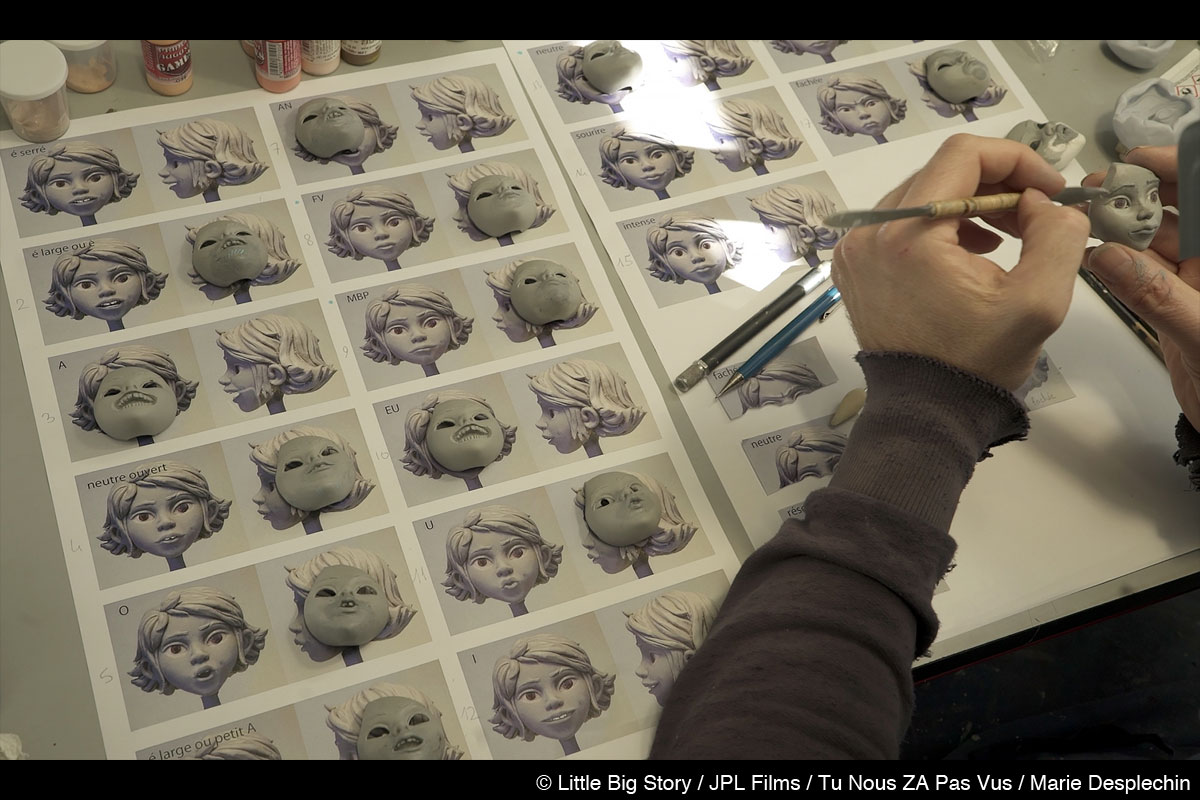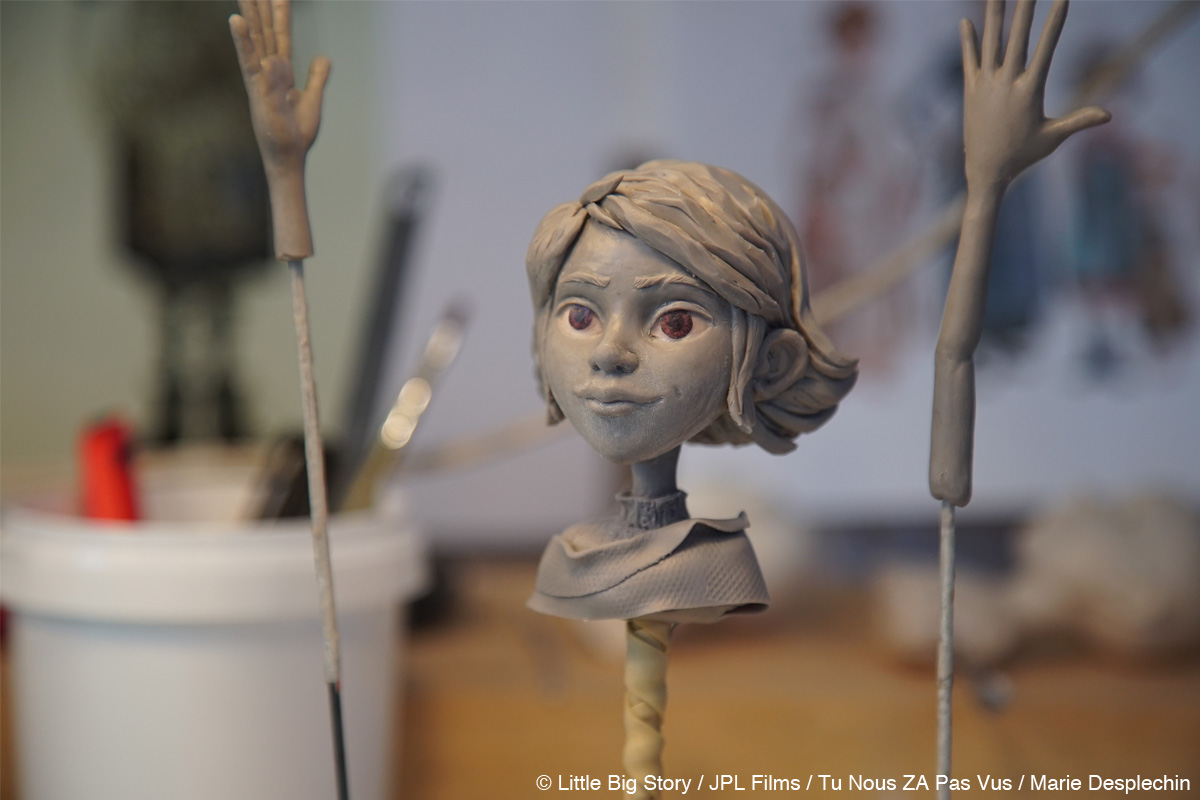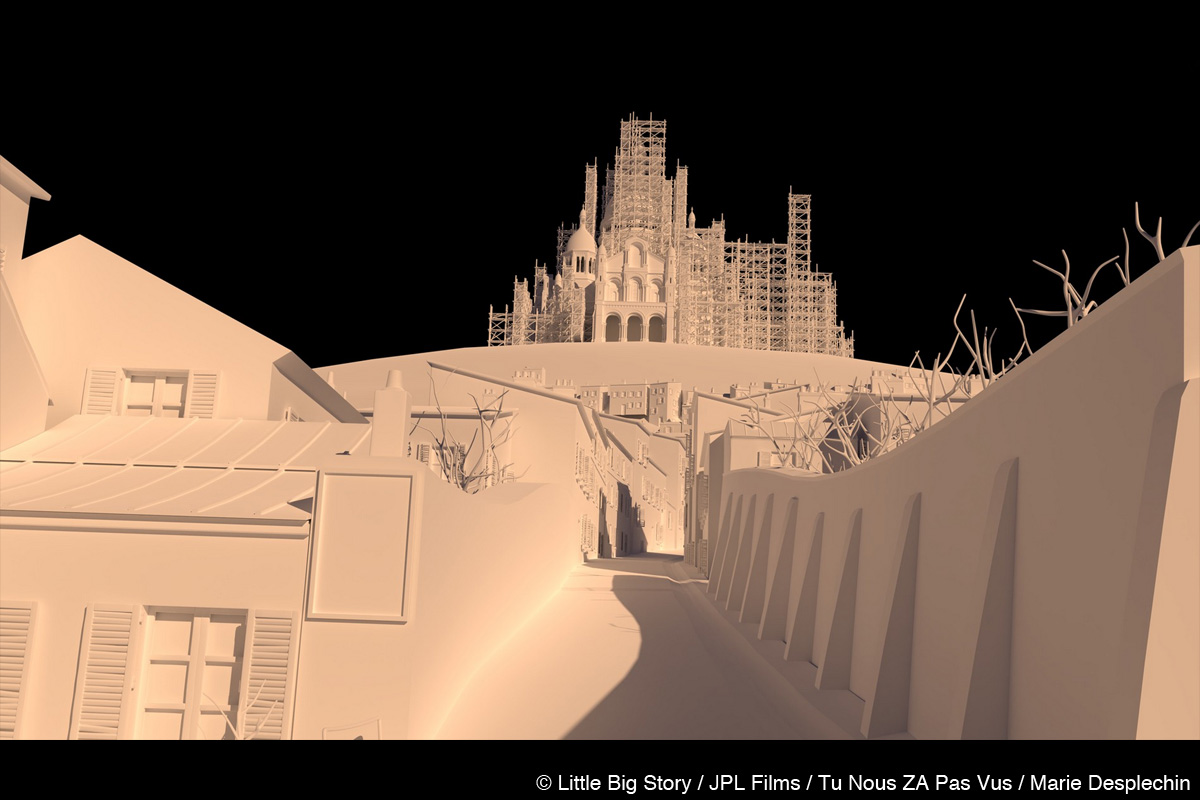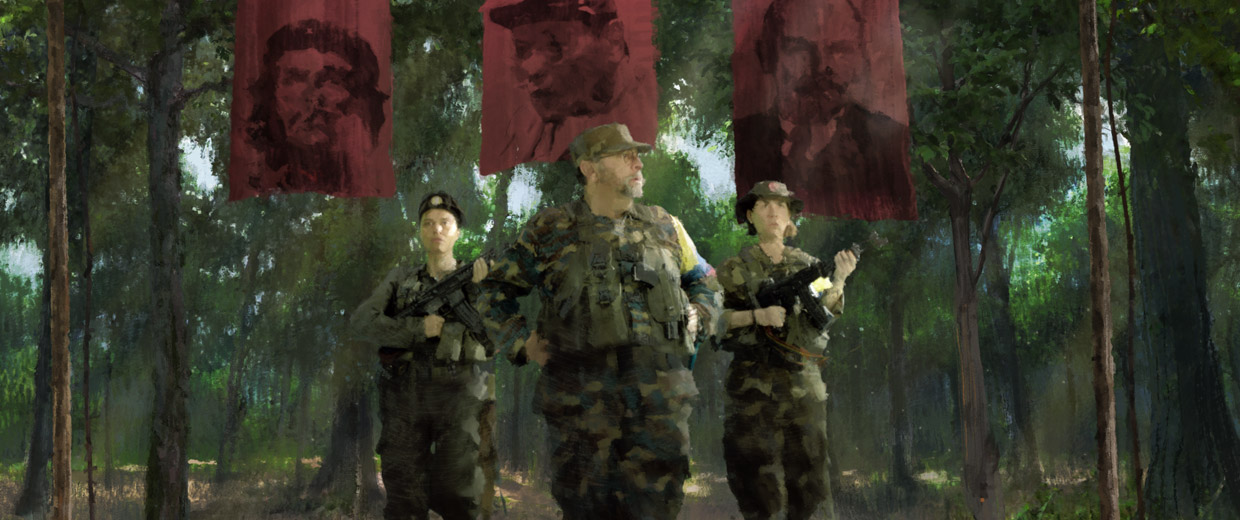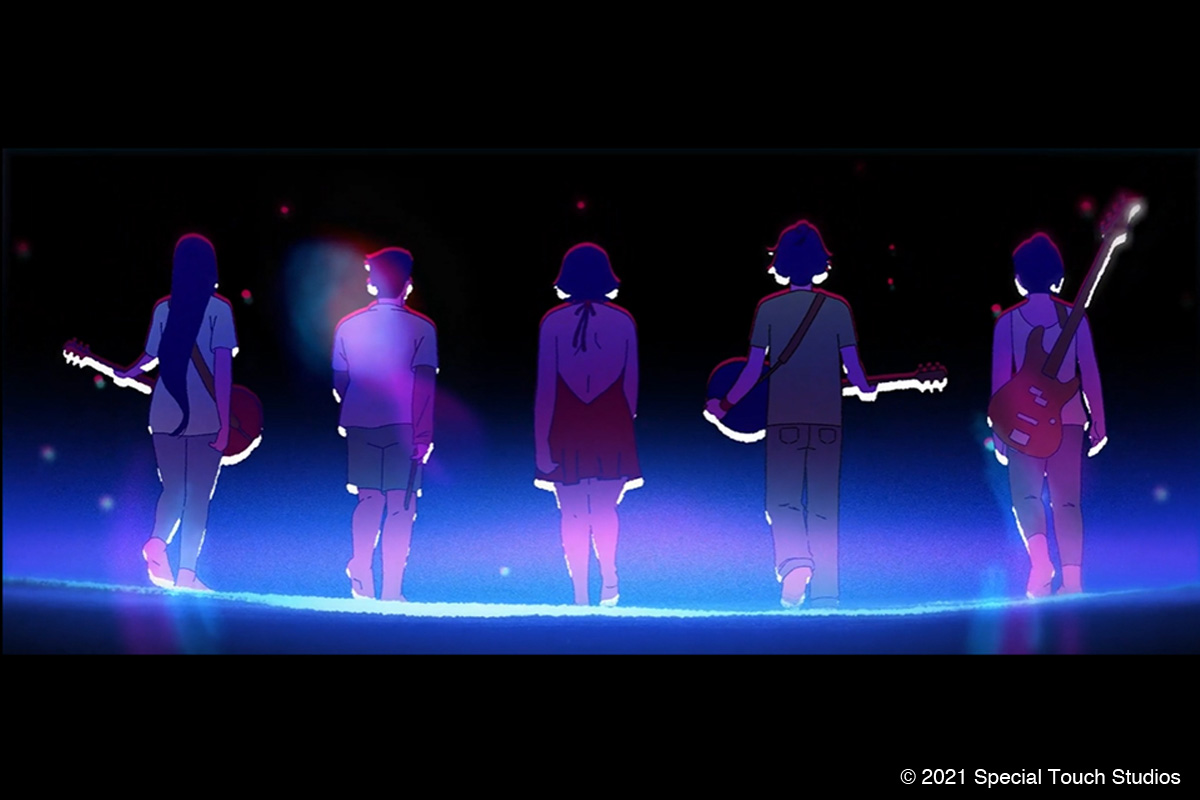Séraphine
(Status: In Development)
Synopsis
Paris, Montmartre, 1883. Séraphine, 12 years old, leaves a monotonous life with Jeanne, the grumpy seamstress who raised her. She is obsessed with finding out who her parents were. Flanked with Mistigri, a street child whom she takes under her wing, Séraphine retraces the secret of her origins and finds it in the battles led by the people of Montmartre.
Séraphine
Director: Sarah Van Den Boom
Author: Marie Desplechin (Adaptation from Séraphine by Marie Desplechin)
Producer: Valérie Montmartin (Little Big Story, France)
Co-Producers: Jean-François Bigot (JPL Films, France) and Marc Rius (Tu Nous ZA Pas Vus, France)
Target Audience: Family
Technique: Stop-motion, 3D digital
Séraphine is a stop-motion/3DCGI animation film project of an orphaned girl in a touching coming-of-age story in Montmartre, Paris. Based on a novel of the same name by Marie Desplechin, the story is set after Paris’s historically tempestuous period with many revolutions. The trailer for the film project was revealed during Cartoon Movie 2021.
Teaming up for the film project are Valérie Montmartin, the producer who has developed a notable career in documentaries, Sarah Van Den Boom, the director who is known for the award-winning titles In Deep Waters (2015) and Raymonde or the Vertical Escape (2018), and Marie Desplechin, the author of the original novel and scriptwriter for the film.
Their pitch made me feel that the story has many meaningful events in place for the girl, which would accentuate the story and display her emotional struggles and growth that the audience could empathize with. In addition to that, with the trailer’s tender visual style, I saw this film project’s potential to attract the worldwide family audience.
We heard the story behind the film project from Valérie Montmartin, Sarah Van Den Boom, and Marie Desplechin. We are happy to share their insightful words with you.
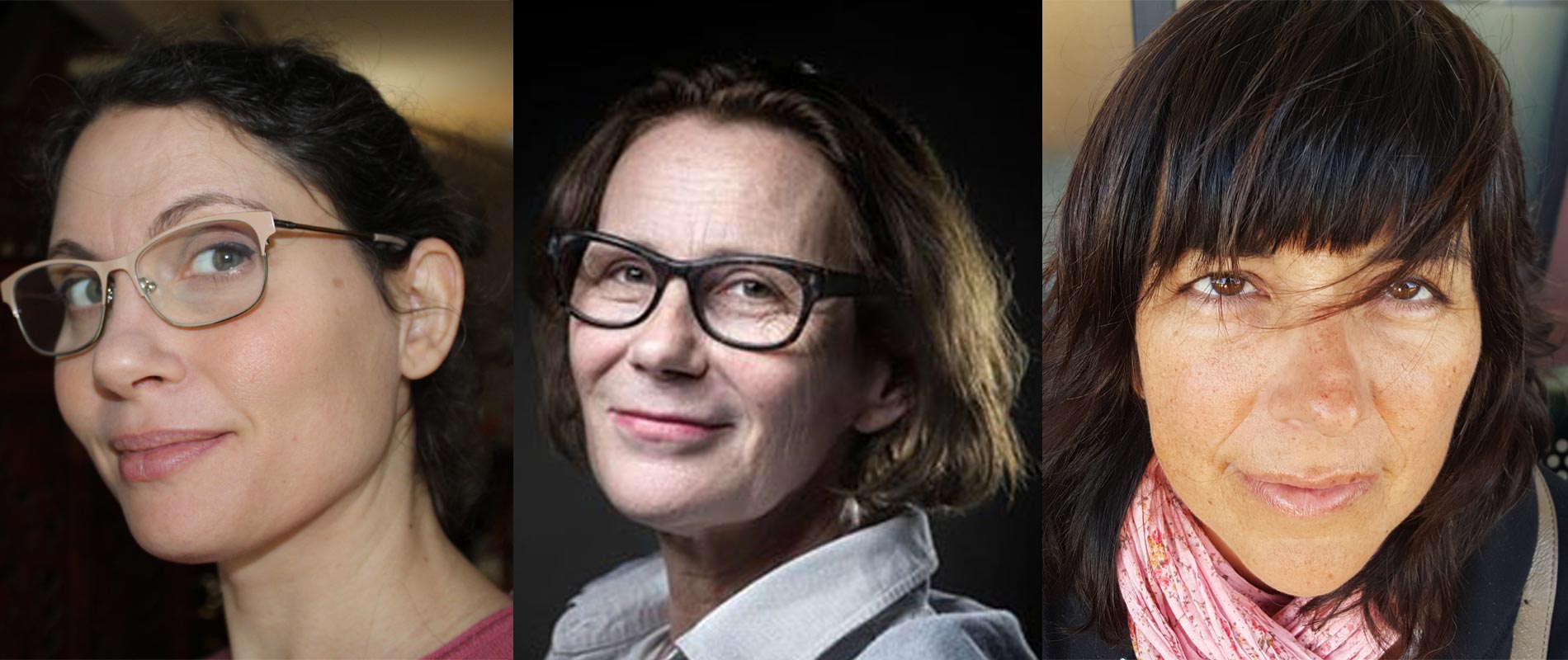
Interview with Sarah Van Den Boom, Marie Desplechin and Valérie Montmartin
Hideki Nagaishi (HN): Could you let us know the key points of your animated feature film project that you would like to appeal to the prospective audience?
Sarah Van Den Boom: First of all, I would say that the base of the story is quite universal: it’s like a stream that’s going to start small, then join up to bigger rivers, then meet the sea: the main thing is to start moving. Séraphine is a young girl that was born orphaned in a poor neighbourhood without any perspective to improve her situation. But she doesn’t accept her fate and tries to deviate her destiny with a quite simple but revolutionary first choice: she will never be a seamstress. This decision is going to make her meet new people and through them she’s going to hear about her father for the first time. Then, digging into the past in order to learn more about him, she’s going to find out about a terrible event that occurred the week she was born. And so, her short young story is going to reveal us history.
The second point is precisely history. The story takes place in Paris, on the Butte Montmartre, in 1883. The Sacré-Cœur is being built and it’s a huge site at the top of the hill. Séraphine was born twelve years earlier, during the terrible repression of what is called “The Commune of Paris”. Most people know about the many Parisian revolutions. The most famous is probably the 1832 one, because most people went through Victor Hugo’s Les Misérables. The Commune of Paris happened in 1871, and was all about equality of the sexes, social justice, education for the poor and girls, and self-determination of workers. And it was crushed in blood by the army, to an extent never seen before. So, Séraphine will learn about it with her naive, childish mind, and it’s going to completely change the way she sees the world and her future. And by her dynamic, she will pull adults out of their prostration and fears, and revive hope.
So, I would say for my third point that, though the subject is quite earnest, the film won’t be sad. It will be dynamic, interesting, and full of this Parisian humour that was so famous at this time. People used to laugh a lot in order to survive their tough lives. And Séraphine works as a maid in a cabaret, so they will also have to sing.
I would say that the global point of the film is precisely how Séraphine, while understanding the past, will be able to embrace her future and make it her own, against prejudices and with the help of a community she chose. And last but not least, all this whirlwind adventure will be set in a beautiful stop-motion animation Montmartre, with awesome colours, lights and music!

HN: How did the project start?
Valérie Montmartin: I happen to have read Marie’s novel without telling myself that it was a children’s novel, and I was immediately imagining it in animation. This story already had all the elements of a great animated film. We had imagined it in 3DCGI with the studio Tu Nous ZA Pas Vu in Arles! I had then spotted Sarah in the Annecy International Animation Film Festival, during the presentation of her wonderful short film Raymonde ou l’évasion verticale (English title: Raymonde or the vertical escape). Sarah read the book and immediately imagined it in stop-motion animation, for the charm that it offers to a story, but also because we dreamed of a film in the 19thcentury that is not a dusty period drama! And that’s how we started with JPL Films in Rennes thinking about building the film in both techniques.
Then, the project was selected in 2020 at the EAVE workshop and I was able to develop it, think reflecting upon the target and the international strategy for the film. The artistic team is amazing and I think the pilot shows how well it works!
HN: Where did the initial idea of the story come from, and what did you take care in the most while you wrote the story?
Marie Desplechin: The idea of the book is fed by my interest in the second part of the 19th century. I come from a family that kept a lot of documents in their attics, and I have photos, letters, and family traces from that time. My great-grandmother was a baby in Paris in 1871, and it was said that she was fed by sucking on strings dipped in grease… Most of our big cities, including Paris where I live, were rebuilt at that time, and haven’t really changed much since. In a sense, we still inhabit part of the 19th century.
The French lovers of literature, of which I am a part of, have been immersed in the realist novels of this century: Balzac, Hugo, Flaubert, Maupassant, and even Proust, which bring a very precise documentation of the life of the time, and the novels allows us to feel it with a lot of emotion. The period is also fascinating because it sees the birth and development of all the great ideologies that will shape the next century, until today: socialism, anarchism, feminism, Fordism, racism, nationalism etc.
Having been very interested in all this for years, I didn’t have to think about it any longer while writing! All I had to do was to follow my little heroine in her environment, while letting the memories of my readings come back; memories of the great impressionist paintings (Caillebotte, Renoir), memories of the work of the great photographers (Atget, Merville)… In a new context, I told the story that I’ve repeated from book to book: a young girl comes out of childhood, struggles to authorize her own destiny, and looks for the father who will legitimize her.
HN: In your opinion, how can the story of an orphaned girl in the 19th century be relevant to today’s audience?
Marie Desplechin: Most of the great heroes of children’s literature are orphans. The intervention of parents would diminish the epic scope of their initiation. Alone, they are free, fully heroes of their own story. This is true today as it was yesterday. Moreover, we are not so far, at the beginning of the 21stcentury, from the realities of the end of the 19th century. Income inequalities, which had largely weakened during the 20thcentury with the invention of the Welfare State, having returned to the considerable gap experienced in the 19th century. The very rich vs. the very poor is a reality of our time, and children know it. We have returned to a time of injustice. Likewise, popular revolts, most often violently crushed, are constantly being revived all over the world. For these reasons, I am convinced of the contemporary significance of a story set in this period, and of the interest of the special light it can shed on our present.
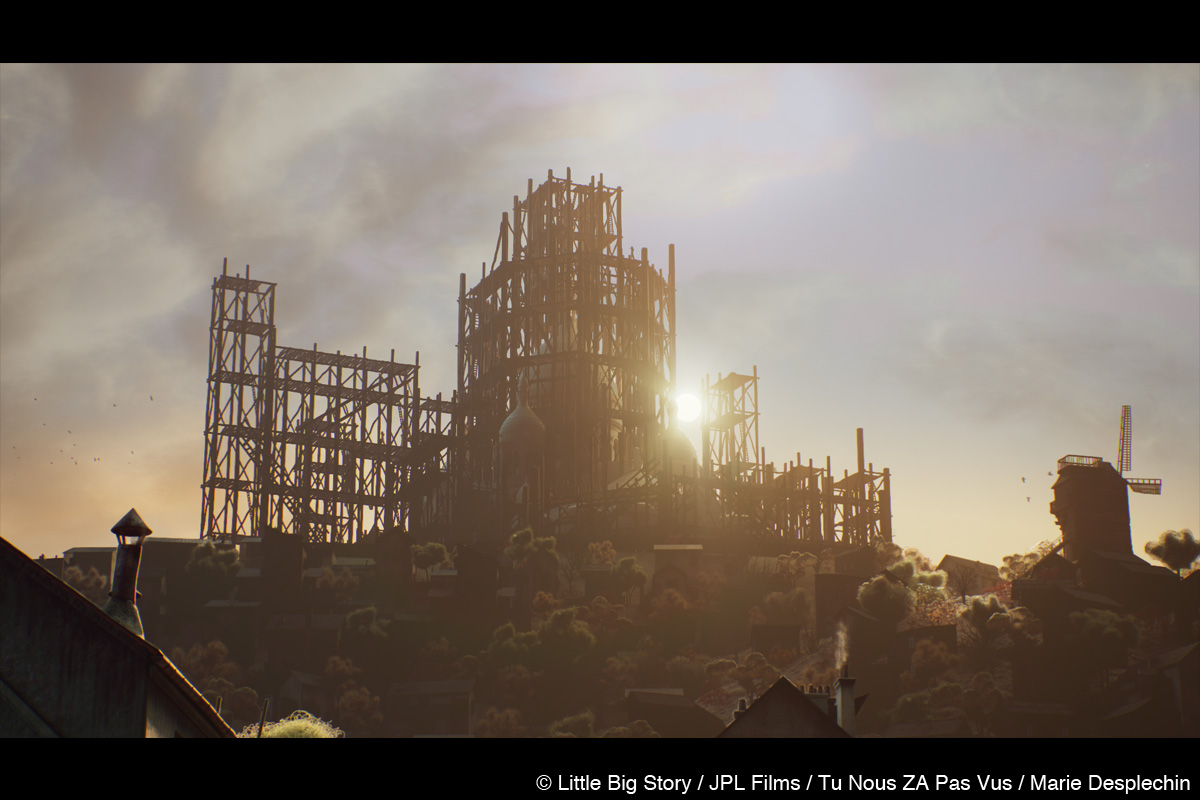
HN: This film will be developed by using stop-motion animation and 3DCGI techniques. How will you use the strengths of both techniques to ensure that they visually blend well together in the final film?
Sarah Van Den Boom: My first technical choice was really stop-motion, because it’s pure magic. I think stop-motion instantly changes people into children. it’s this old dream we all had once: we’re standing in front of a doll house, we’re snooping through a window and suddenly we see the dolls live their own life! That’s the feeling stop-motion gives. It works, no matter your age and that’s probably why it’s the animation technique that opens up the most to a wide audience. And moreover, by it’s naturally tiny scale and the characteristic charm of the acting of the puppets, stop-motion has a special warmth that touches hearts and makes the film timeless.
That said, stop-motion is quite heavy to handle. It takes big studios and material, and crowd animation is close to impossible. When I started to picture the film in stop-motion, I quite quickly came across the problems of the huge Parisian perspectives, as well as the barricades and the crowd of fighters! That’s how I started to wrap my mind around this idea of a mix with 3DCGI. 3DCGI brings the possibility of building huge sets, without necessarily needing an aircraft hangar for each! Imagine the Sacré-Cœur site on the hill, with Paris around it, or a road intersection with barricades and fighters seen from the roofs, for example. Even on a puppet scale, it’s still huge and 3DCGI just takes a computer. With 3DCGI we can also copy/paste extras and use a crowd animation program. We can also handle scale problems: if we have a tiny character like a mouse, it could be interesting to make it in 3DCGI. Of course, the 3DCGI must remain absolutely unsuspected. It has to be “disguised in stop-motion”. No one should guess the trick, so the mix has to be perfectly fluid. At first, I had no clue if it was even possible. We made the pilot in that perspective: we wanted to test the intricate meeting of these two techniques. And it works! The stop-motion brings the magic and the charm, the 3DCGI brings technical solutions. It’s the future meeting the best of Arts and Crafts!
Valérie Montmartin: Merging these techniques is probably the future of stop-motion. It allows us to consider even more ambitious films. It also allows to consider them within a European economic framework!
HN: Could you let us know the most important characteristic and goal of the visual design of the universe for the story and characters?
Sarah Van Den Boom: I’m very much into history, I have a passion about costumes and I especially love the 19thcentury. Because it’s beautiful and also because it’s socially terrible. So, I want to bring an insightful experience with quite realistic sets. I want people to feel this time in details: the coal dust everywhere. The poor food. The poverty. The objects made of wood, fabric, metal, porcelain or leather only. The colours. The light. But on the other hand, I want the characters to be expressive and communicate strong emotions. So, in order to give the animators the possibility of an expressionist playing, the characters need to be little expressionists and caricaturists. Too much realism would kill the poetry and inhibit the animators. So, we play on a very narrow window: my aim is to find some kind of harmony and balance.




